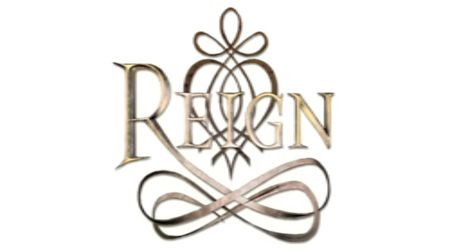The House of Stuart is the ruling family of Scotland at the time that Reign takes place. It was founded by Robert II of Scotland and came into power in the 14th century.
History[]
The House of Stewart (latterly gallicised to Stuart), is a European royal house. Founded by Robert II of Scotland, the Stewarts first became monarchs of the Kingdom of Scotland during the late 14th century, and subsequently held the position of the Kings of England, Ireland, and Great Britain. Their patrilineal ancestors (from Brittany) had held the office of High Steward of Scotland since the 12th century, after arriving by way of Norman England. The dynasty inherited further territory by the 17th century which covered the entire British Isles, including the Kingdom of England and Kingdom of Ireland, also maintaining a claim to the Kingdom of France.
Origin of the name "Stuart"[]
The name Stewart derives from the political position of office similar to a governor, known as a steward. It was originally adopted as the family surname by Walter Stewart, 3rd High Steward of Scotland, who was the third member of the family to hold the position. Prior to this, family names were not used, but instead they had patronyms defined through the father; for example the first two High Stewards were known as FitzAlan and FitzWalter respectively. During the 16th century the French spelling Stuart was adopted by Mary, Queen of Scots when she was living in France. She sanctioned the change to ensure the correct pronunciation of the Scots version of the name Stewart, because retaining the letter 'w' would have made it difficult for French speakers, who usually render "w" as "v". The spelling Stuart was also used by her second husband, Henry Stuart, Lord Darnley; he was the father of James VI and I, so the spelling Stuart for the British royal family officially derives from him.
Background[]
In 1503, James IV attempted to secure peace with England by marrying King Henry VII's daughter, Margaret Tudor. The birth of their son, later James V, brought the House of Stewart into the line of descent of the House of Tudor, and the English throne. Margaret Tudor later married Archibald Douglas, 6th Earl of Angus, and their daughter, Margaret Douglas, was the mother of Henry Stuart, Lord Darnley. In 1565, Darnley married his half-cousin Mary, Queen of Scots, the daughter of James V. Darnley's father was Matthew Stewart, 4th Earl of Lennox, a member of the Stewart of Darnley branch of the House. Lennox was a descendant of Alexander Stewart, 4th High Steward of Scotland, also descended from James II, being Mary's heir presumptive. Thus Darnley was also related to Mary on his father's side and because of this connection, Mary's heirs remained part of the House of Stewart. Following John Stewart of Darnley's ennoblement for his part at the Battle of Baugé in 1421, and the grant of lands to him at Aubigny and Concressault, the Darnley Stewarts' surname was gallicized to Stuart.
Both Mary, Queen of Scots, and Lord Darnley had strong claims on the English throne, through their mutual grandmother, Margaret Tudor. This eventually led to the accession of the couple's only child James as King of Scotland, England, and Ireland in 1603. However, this was a Personal Union, as the three Kingdoms shared a monarch, but had separate governments, churches, and institutions. Indeed the personal union did not prevent an armed conflict, known as the Bishops' Wars, breaking out between England and Scotland in 1639. This was to become part of the cycle of political and military conflict that marked the reign of Charles I of England, Scotland & Ireland, culminating in a series of conflicts known as the War of the Three Kingdoms. The trial and execution of Charles I by the English Parliament in 1649 began 11 years of republican government known as the English Interregnum. Scotland initially recognized the late King's son, also called Charles, as their monarch, before being subjugated and forced to enter Cromwell's Commonwealth by General Monck's occupying army. During this period, the principal members of the House of Stuart lived in exile in mainland Europe. The younger Charles returned to Britain to assume his three thrones in 1660 as "Charles II of England, Scotland & Ireland", but would date his reign from his father's death eleven years before.
The House of Stuart Today[]
The Royal House of Stuart became extinct with the death of Cardinal Henry Benedict Stuart, brother of Charles Edward Stuart, in 1807. Duke Francis of Bavaria is the current senior heir. However, Charles II had a number of illegitimate sons whose surviving descendants in the male line include Charles Gordon-Lennox, 10th Duke of Richmond, Murray Beauclerk, 14th Duke of St Albans, Henry FitzRoy, 12th Duke of Grafton and Richard Scott, 10th Duke of Buccleuch.
List of Monarchs[]
Scotland[]
|
Great Britain & Ireland[]
|
Family Tree[]
| Margaret Erskine | James V † | Marie de Guise | |||||||||||||||||||||||
| James Stuart (I) | Mary Stuart | Francis | |||||||||||||||||||||||
Note:
- Dashed lines denote marriage, engagement or a relationship that resulted in a child.
- Solid lines denote blood relation.
- † denotes deceased.
- (I) denotes an illegitimate child.




